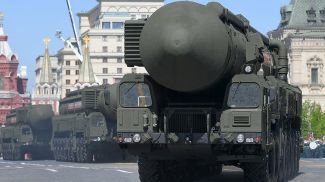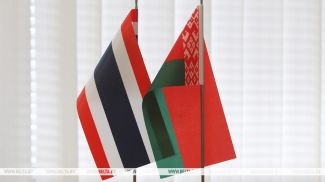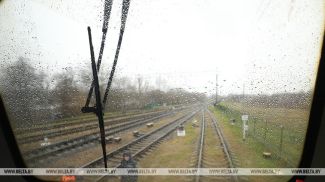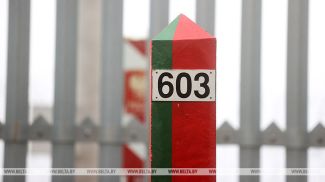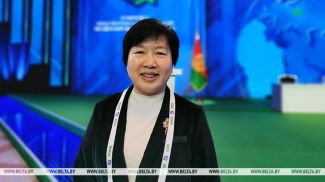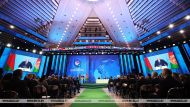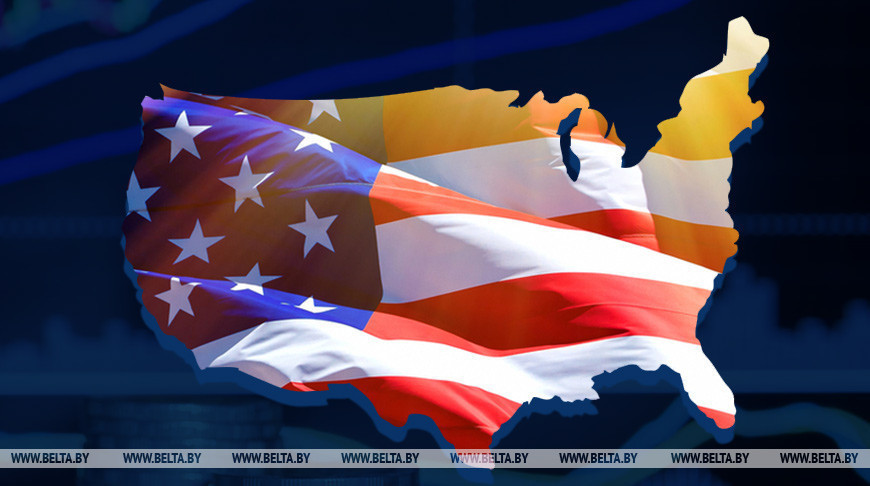
The United States of America. A country of beautiful facades. A fighter for freedom and human rights, a stronghold of democracy, a guarantor of stability and security in the world... All these definitions were coined by the United States itself with one goal: to convince the world of its exclusivity, to become the world sheriff, to have the unconditional right to apportion blame and pass sentence without trial. This exclusive right of Washington has become above law, above the UN Charter, above human morality.
The history of the United States over the past hundred years is one of war and destruction. Military interventions and economic blockades, color revolutions and coups d'état, provocations... Wherever U.S. soldiers set foot, they leave a long trail of blood. It was the United States that became the first and only country in the world to use nuclear weapons against civilians in Hiroshima and Nagasaki. It was the United States that unleashed an environmental warfare in Vietnam, which led to numerous civilian casualties and severe environmental consequences. It was the United States that invaded Iraq under the pretext of disarming it from weapons of mass destruction. After killing hundreds of thousands of Iraqis and reducing the country to ruins, the U.S. government admitted that it made a mistake, that Iraq had no chemical, biological, or nuclear weapons. Then there was Syria, Libya, Afghanistan, Yugoslavia...
As the U.S. continues to spread "democratic values" in the world, millions of people are reaping death and grief. These people no longer have a home or hope for the future. They are forced to wander around the world, begging for a bit of mercy in foreign countries. Meanwhile, the rich countries of the West are building walls, fencing borders with barbed wire and blaming refugees for all the troubles.
But does anyone blame the United States? Does anyone remember the heinous crimes committed by the U.S. "hawks"? Perhaps some still do today. But tomorrow history may be rewritten beyond recognition. In 10 to 20 years, young Japanese will believe that it was the Soviet Union that dropped atomic bombs on their country. The same old Soviet Union will be blamed for unleashing World War II while the United States will be hailed for restoring peace on the planet.
The Belarusian news agency BelTA is launching a project on U.S. war crimes. We will narrate about the events that have not yet been rewritten. The Vietnam War, the atomic bombings of Hiroshima and Nagasaki, the CIA “black sites”, the invasion of Iraq, the military intervention in Yugoslavia... People must remember what happenedfor the sake of the future.
My Lai Massacre, or how U.S. soldiers slaughtered 504 Vietnamese civilians in a small village
Every country that has gone through the horrors of war, slavery and racial discrimination has its own symbols of tragedy. Brest Fortress and Khatyn in Belarus, the Auschwitz-Birkenau State Museum in Poland, the Hiroshima Peace Memorial Park in Japan, the Apartheid Museum in South Africa, the Kigali Genocide Memorial in Rwanda…
Vietnam has its own symbol of tragedy - a long moat in the village of My Lai (Son My village community). On 16 March 1968, it was littered with the tormented corpses of children, women and the elderly. On that March morning, U.S. Army soldiers attacked the village and killed, raped, and tortured defenseless people. In a few hours, the U.S. military brutally murdered 504 villagers, including about 200 children. What was their fault? Was it the fact that they lived peacefully on their land, grew crops, and raised children? Or they simply turned out to be in the way of a ruthless killing machine?
The My Lai massacre became one of the symbols of the Vietnam War. At first, the United States tried to cover up the truth about the monstrous crime committed by their valiant soldiers. Even today they prefer to avoid remembering these terrible events. But still there are many who remember the tragedy and mourn. Including in the United States itself.
The Vietnam War lasted almost 20 years. During that time, hundreds of thousands of people died. The United States was directly involved in the hostilities. Acting on the side of South Vietnam, the U.S. Army fought against the communist government of North Vietnam. The U.S. military faced a powerful guerrilla movement that had a popular support on the ground. It was in search of guerrillas that on 16 March 1968, the 3rd Charlie Company from the Task Force of the 23rd Infantry Division of the U.S. Army arrived in the Son My village community.
The U.S. military received the intelligence that My Lai provided a haven for the Vietcong 48th Force Battalion. Early in the morning of 16 March, "Charlie" fighters arrived in the village of My Lai in search of the 48th battalion. However, the intelligence proved faulty at best. There were only civilians in the village. The U.S. military did not find any guerrillas or hidden weapon caches. What happened next defies comprehension.
The 1st Platoon led by Lieutenant William Calley opened fire on farmers working in rice fields. The U.S. military then launched an onslaught on the village, firing continuously. They threw hand grenades into houses, set fire to huts, preventing people from leaving, raped women, tortured the elderly, shot one-year-old children, scalped and decapitated corpses.
The Four Hours in My Lai documentary was released years later. The film contains an interview with U.S. soldier Varnado Simpson, who participated in the massacre. Here's what he said: "… my mind just went…and I just started killing. Old men, women, children, water buffaloes, everything… I just killed… That day in My Lai, I was personally responsible for killing about 25 people. Personally. Men, women. From shooting them, to cutting their throats, scalping them, to...cutting off their hands and cutting out their tongues. I did it. A lot of people were doing it, and I just followed.” Later on Simpson committed suicide.
They killed people like sheep. Letter from Private Ridenhour
For a long time, the information about the events in My Lai was carefully covered up. The Charlie Company’s after-action report counted 128 Vietcongs dead and three weapons captured. In the media, this news was presented as a significant victory for the U.S. Army over the enemy.
Only a year later, Private Ron Ridenhour, who served in Vietnam and heard stories from other soldiers about the crime at My Lai, sent letters to U.S. President Richard Nixon, the Pentagon, the Department of State and the Congress. In his letters, Ridenhour described the events as narrated by the eyewitnesses.
“It was late in April, 1968 that I first heard of ‘Pinkville’ [code name of My Lai] and what allegedly happened there. I received that first report with some skepticism, but in the following months I was to hear similar stories from such a wide variety of people that it became impossible for me to disbelieve them,” Ridenhour wrote.
In his letter, he described how U.S. soldiers shot villagers, including young children. "It was terrible. They were slaughtering villagers like so many sheep. Calley's men were dragging people out of bunkers and hootches and putting them together in a group. The people in the group were men, women and children of all ages. As soon as he felt that the group was big enough, Calley ordered a M-60 (machine gun) set up and the people killed.
It was so bad, that one of the Charlie Company men shot himself in the foot in order to be medivaced out of the area so that he would not have to participate in the slaughter.”
“I feel that I must take some positive action on this matter. I hope that you will launch an investigation immediately,” Ridenhour said in his letter.
Most recipients of Ridenhour's letter ignored it, with the exception of Congressman Mo Udall who insisted on an investigation. The Pentagon had to start it.
As a result, Lieutenant Calley was recalled to the United States, where he received an official notification that he was being detained on suspicion of committing mass murder. Several more officers were charged with violation of military duty, some soldiers were accused of murder as the investigation progressed.
Seymour Hersh's investigation: ‘They had them in a group standing over a ditch - just like a Nazi-type thing’
The investigation of the massacre at My Lai was not made public at first. This tragedy could have remained unknown to the general public, if not for a series of articles by independent U.S. journalist Seymour Hersh. The information he published became an information bomb. So, what did Seymour Hersh report about?
In the autumn of 1969, Hersh received a tip about a soldier being held in Georgia for a court-martial for allegedly killing 75 civilians in South Vietnam. Hersh identified the soldier as Lieutenant William Calley. He next found Calley's lawyer, George W. Latimer, who showed him a document which revealed Calley was charged with killing 109 people. Subsequently, Hersh managed to meet with Calley himself and his fellow soldiers.
Hersh's first article on My Lai, titled "Lieutenant Accused of Murdering 109 Civilians," was published on 13 November 1969. At that time, the investigation into Calley's case had not yet been completed. In his article, Hersh said that the 26-year-old lieutenant was accused of murdering civilians while serving in Vietnam. At the same time, Calley himself, his lawyer and some other persons associated with the incident consistently claimed that they were following orders.
"There are always some civilian casualties in a combat operation. He isn't guilty of murder," one of Calley’s fellow soldiers told Hersh.
As for Calley, although he agreed to be interviewed, he refused to discuss in detail what had happened in My Lai. Here is how Hersh describes him in his article: “As for Calley - he is smoking four packs of cigarettes daily and getting out of shape. He is 5-foot-3, slender, with expressionless gray eyes and thinning brown hair. He seems slightly bewildered and hurt by the charges against him. He says he wants nothing more than to be cleared and return to the Army.”
Friends described Calley as a “gung-ho Army man”. “Maybe he did take some order to clear out the village a little bit too literally,” one friend said.
In the conversation with Hersh, Calley said that he would like to return to Vietnam. “I know this sounds funny,” he said in an interview, “but I like the Army ... and I don’t want to do anything to hurt it.”
Hersh’s article was published in a number of major media outlets, including the Washington Post, the Boston Globe, the Miami Herald. However, the material did not produce a lot of resonance at first. Despite this, the journalist continued the investigation.
He began to travel around the country, meeting with Calley’s former fellow soldiers. From what Hersh heard, the number of casualties in My Lai was much bigger than what official documents admitted. As a result, the journalist published an interview with the U.S. military who witnessed the search-and-destroy mission in My Lai.
“The whole thing was so deliberate. It was point-blank murder and I was standing there watching it,” Sgt. Michael Bernhardt told the journalist.
Bernhardt was a member of one of three platoons of an Eleventh Infantry Brigade company under the command of Capt. Ernest Medina. According to him, when the U.S soldiers entered the village, there was not a single draft-age man there who could be suspected of having links with the enemy. There were only children, women and old people.
“I walked up and saw these guys [Calley’s soldiers] doing strange things. They were doing it three ways. One: They were setting fire to the hootches and huts and waiting for people to come out and then shooting them up. Two: They were going into the hootches and shooting them up. Three: They were gathering people in groups and shooting them,” said Bernhardt.
Bernhardt claimed he had no idea how many villagers were shot. He said that he had heard death counts ranging from 170 to more than 700. When asked why Bernhardt did not report the incident, the sergeant said that he intended to do so. However, his captain, Ernest Medina, told him to wait until a brigade investigation of the incident was completed. Bernhardt’s words were confirmed later during the trial.
Bernhardt said that about 90% of the men in the company were involved in the shootings. He took no part, he said. His opinion, he said, is that a higher ranking officer must have ordered the destruction of the village. “Calley’s just a small fry,” he said. Bernhardt said the army must have known at high levels just what had happened in My Lai.
Another witness to the shootings was Michael Terry. Interviewed by Hersh, Terry said he, too, came on the scene moments after the killings began.
“They just marched through shooting everybody,” he said. At one point more than 20 villagers were lined up in front of a ditch and shot. “They had them in a group standing over a ditch - just like a Nazi-type thing. ... One officer ordered a kid to machine-gun everybody down, but the kid just couldn’t do it. He threw the machine gun down and the officer picked it up. I don’t remember seeing any men in the ditch. Mostly women and kids,” Terry said.
When asked by Hersh why the U.S. military killed civilians, Terry replied: “A lot of guys feel that they aren’t human beings; we just treated them like animals.”
There were other horror stories as well. At the same time, almost every witness of the My Lai massacre recalled that terrible ditch where both the living and the dead were dumped. Warrant Officer Jerry Culverhouse described it as follows: “We immediately noted the bodies... There were numerous bodies scattered both in the inner perimeters of the village and in the outer perimeters leaving the village. On the east side of the village there was an irrigation ditch, which appeared to me to be about six or seven feet wide and five or six feet deep. There were numerous bodies that appeared to be piled up. For an area around thirty to thirty-five yards the ditch was almost completely filled with bodies.”
And here is another heartbreaking story that many witnesses later recalled. On Calley’s orders, the soldiers fired on the people lying in that same ditch. Suddenly there was a loud cry. A two- or three-year-old boy, covered in mud and blood, had crawled out of the ditch and was making his way through the bodies towards rice fields. Calley threw the child back in and shot him.
“I sent them a good boy and they made him a murderer.” Paul Meadlo’s shocking confessions.
Hersh continued to publish articles about the My Lai massacre, revealing new details. He managed to interview Paul Meadlo, a participant in the punitive operation, who killed dozens of civilians on Calley’s orders.
“That was the first man I shot. He was hiding in a dugout, shaking his head and waving his arms, trying to tell me not to shoot him,” Paul Meadlo said describing how he killed his first victim - an elderly man who was hiding in one of the huts.
Meadlo recalled how Calley ordered to gather up the people. At some point about 40 or 45 civilians were standing in one big circle in the middle of the village. “Get with it. I want them dead,” Calley said and started shooting them. Then he told other soldiers to do the same. Meadlo started shooting, but some of his fellow soldiers wouldn’t do it.
“I used four or five clips,” Meadlo said. He estimated that he killed at least 15 civilians standing in the circle.
Asked what he thought at the time, Meadlo said, “I just thought we were supposed to do it.” Later he said that the shooting “did take a load off my conscience for the buddies we’d lost. It was just revenge, that’s all it was.” According to him, over the past month, the platoon had lost several people as a result of mine explosions. Because of this, hostility towards the Vietnamese took root among the soldiers.
The killings continued. Meadlo shot people at the ditch, threw hand grenades in the huts where survivors could hide. “We all were under orders,” Meadlo said. “We all thought we were doing the right thing. At the time it didn’t bother me.”
However, a few hours after the end of the massacre, Meadlo began to have serious doubts. Did he have the right to take the lives of children and women? He had some haunting memories. “They didn’t put up a fight or anything. The women huddled against their children. They hugged them, and put their bodies over them trying to save them”.
The next day, 17 March, Meadlo walked into a landmine and lost his leg. Then he told Calley that this was punishment for what had happened the day before. He warned that Calley would have his day of judgment, too.
A few days prior to the interview with Hersh, Meadlo received a call from an officer at the Georgia military base where Calley was being held. The officer advised that Meadlo should not discuss the case with reporters. But he seemed eager to talk. “He seems like he just can’t get over it. I sent them a good boy and they made him a murderer,” his mother Myrtle Meadlo said.
Crime without punishment. How the United States acquitted war criminals
Meanwhile, the media published color photographs taken at the scene of the massacre in Son My by former army photographer Ronald Haeberle. Some of the black and white photographs he took were made using an army camera. On the other hand, Haeberle took color photographs with his own camera while on duty the same day, which he later sold to Life magazine. These photos became some of the most famous photographs of the Vietnam War. The brutality of the My Lai massacre sparked a firestorm of international outrage.
The White House was forced to officially admit the massacre. Lieutenant General William R. Peers was appointed head of the Department of the Army Review of the Preliminary Investigations into the My Lai Incident. The inquiry released its report in March 1970. Based on the report, several dozen officers were charged with involvement in the massacre, including one general. Though several of them faced courts-martial, only Calley was ever convicted.
In 1971, Lieutenant Calley was found guilty of killing 22 South Vietnamese civilians. Calley was given a life sentence, but later was pardoned by President Richard Nixon - the prison sentence was first changed into house arrest, and then completely canceled. Calley was released in 1974.
In the 1970s, the American public opinion was further divided over the Vietnam War. Anti-war sentiment was growing in the country. However, along with this, many justified Calley’s actions. They saw him as a scapegoat and blamed the military command and politicians for what had happened. While the Calley trial was going on, the lieutenant received thousands of letters and parcels daily from sympathetic citizens. The song Battle Hymn of Lieutenant Calley sold more than a million copies.
William Calley wouldn’t admitguilt for a long time. At the trial he said that he put the lives of his soldiers above those of his enemies. That, in his opinion, was the only crime he committed. Forty years after the My Lai tragedy, Calley publicly apologized for what he had done: “There is not a day that goes by that I do not feel remorse for what happened that day in My Lai... I feel remorse for the Vietnamese who were killed, for their families, for the American soldiers involved and their families. I am very sorry.”
Seymour M. Hersh received the Pulitzer Prize for his articles about the My Lai massacre. The journalist continued working on the topic. Over the following few years he kept gathering information about the tragedy, including the attempts of the U.S. authorities to cover the whole story up.
Thompson intervenes. What is known about the pilot who rushed to save people?
The story of the tragic events in the village of My Lai would not be complete without the mention of U.S. pilot Hugh Thompson. Some killed innocent people following orders. But some refused to stand by and silently watch the monstrous massacre. Thompson was the only witness to those events who tried to stop the atrocity.
Thompson served as a reconnaissance helicopter pilot with Company B, 123rd Aviation Battalion, American Division. While flying on a reconnaissance mission, he spotted Calley's soldiers shooting civilians. This is how he later described what he saw: “Everywhere we'd look, we'd see bodies. These were infants, two-, three-, four-, five-year-olds, women, very old men, no draft-age people whatsoever."
Thompson saw a group of farmers fleeing from U.S. soldiers. He landed in the line of fire between U.S. ground troops and Vietnamese civilians to prevent their murder. He ordered his crew to open fire on Calley's men if they continued to pursue the Vietnamese. Thompson radioed for help to evacuate the survivors. Thanks to him, 12 people were rescued.
Thompson later testified against those standing trial. For this, Thompson was condemned and ostracized by many in the United States military and the public. In an interview, he said that he had received death threats over the phone and that he had repeatedly found mutilated bodies of animals on his porch.
Thirty years after the tragic events, Thompson visited My Lai, where he met several Vietnamese he had saved. “I cannot explain why it happened. I just wish our crew that day could have helped more people than we did,” he told the crowd.
Many in the crowd applauded Thompson. One woman approached him and asked: “Why didn't the people who committed those atrocities come with you?” After a pause she added: “So that we could forgive them.”
Environmental warfare and forgotten bombs. What did the USA leave behind in Vietnam?
The village of My Lai became a symbol of the tragic events of the Vietnam War. But there were dozens, perhaps, even hundreds of such villages. Former U.S. Private Terry Reid once told Seymour Hersh: “Sometimes I thought it was just my platoon, my company that was committing atrocious acts, and what bad luck it was to get in it. But what we were doing was being done all over.”
Former Vietnamese Vice President Nguyen Thi Binh, who led the South Vietnamese National Liberation Front delegation to the Paris peace talks in the early 1970s, once said: “My Lai only became important in the United States after an American reported about it”. A few weeks after the massacre, the North Vietnamese representative in Paris spoke publicly about the events, but the story was considered propaganda in the West. The situation changed when people started talking about My Lai in the United States. “There wasn't just one My Lai in Vietnam - they were many,” Nguyen Thi Binh said.
Environmental warfare can be added to the crimes committed by the U.S. Army in Vietnam. In fact, the USA used chemical weapons against civilians.
The U.S. military sprayed chemicals to destroy vegetation. This was supposed to make it easier to find the enemy in the jungle. Agent Orange, a mixture of defoliants and synthetic herbicides, was used in Vietnam. This substance got into the body and led to cancer, blood, liver and fetal development disorders.
According to the Pentagon, over a ten-year period from 1961 to 1971, the U.S. forces sprayed 72 million liters of Agent Orange across Vietnam. The chemicals almost completely destroyed ancient mangrove forests, killing about 140 species of birds. Hazardous chemicals also polluted the soil and rivers.
According to the Red Cross, the U.S. environmental warfare in Vietnam affected some three million people. About 150,000 children were born with mutations. The dioxin contaminant continues to have harmful impact today.
Health problems associated with the use of chemicals were also reported by the U.S. military. According to some reports, the number of the U.S. personnel exposed to the chemicals exceeds 100,000.
The Vietnamese authorities, as well as residents of the country exposed to Agent Orange, have repeatedly tried to hold accountable the U.S. chemical companies that supplied the Pentagon with the dangerous chemicals. For decades, however, the lawsuits have been dismissed. They say courts in the USA have no right to prosecute the companies because they followed orders from the president of the country. It has also been argued that Agent Orange is not a poison under international law. But should we be surprised at the actions of U.S. judges after the executioners who murdered 500 civilians in My Lai were acquitted in the USA?
The USA left behind another terrible footprint. During the war, Vietnam became a minefield. From the end of the war to 1998, more than 100,000 Vietnamese civilians, 40% of them children, were killed or injured by explosive remnants of the war.
In 1996, the U.S. government began allocating modest sums from its budget for demining activities in Vietnam. In the 2000s, the U.S. veterans organization provided financial support as part of the program to remove landmines in Vietnam. The program, among other things, was aimed at educating Vietnamese, especially farmers and children, about the dangers of unexploded ordnance.
“I will never forget that pain...”
A huge anti-war movement swept the United States in the late 1960s and early 1970s. Television broadcast the footage depicting a string of coffins with the bodies of U.S. soldiers. After Hersh's publications, photos of Vietnamese civilians tortured to death began to appear in the media with increasing frequency. All of this led to large-scale protests across the country, which were harshly suppressed by the authorities. During one of such protests, held near Kent State University (Ohio), the U.S. National Guard opened fire on unarmed students killing four peaceful activists. The Kent State shooting, however, only intensified the anti-war sentiments in the country.
In 1973 the United States withdrew its troops from Vietnam. Despite huge resources, money and manpower thrown into the war, the USA lost it to the North Vietnamese army and the guerrilla movement in the south.
During the Vietnam War, some 58,000 U.S. servicemen were killed or went missing. Tens of thousands of the Vietnam War veterans committed suicide after returning home.
The U.S. losses, however, are not comparable to those of Vietnam. The war claimed lives of more than three million Vietnamese, most of them civilians. The country was in ruins. The consequences of the war continue to manifest to this day.
The people of Vietnam keep the memory of the terrible times their country had to go through. There are eyewitnesses to those tragic events who are still alive. Many of them say that they are ready to put the horrors they lived through behind but their hearts will never forget what happened.
There are also those among U.S. people who remember and mourn. Seymour Hersh and his family came to visit My Lai nearly 50 years after the massacre. He attended the memorial set up there, and also the museum, where he met with the Vietnamese who miraculously survived the massacre.
The journalist had a chance to talk to museum director Pham Thanh Cong. When U.S. soldiers attacked My Lai, Cong was eleven years old. The soldiers threw a hand grenade into the house, where he was hiding with his family, and then started shooting. Three bullets hit Cong and the boy lost consciousness. When he came round, he saw the bodies of his mother, three sisters and six-year-old brother beside him. The U.S. soldiers must have thought Cong was also dead. When the military left the village, the boy was found by locals who had come to bury the dead.
“I will never forget this pain ... We forgive, but we don't forget,” Cong said.




